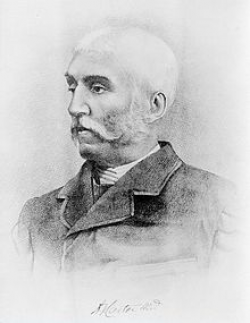Dr Henry Vandyke Carter

- Born
- 22 May 1831
- Died
- 4 May 1897 (age 65)
Dr Henry Vandyke Carter’s most noticeable contribution to the world of medicine was his deep understanding of human anatomy and detailed illustrations that helped to compile the first edition of Gray’s Anatomy. The book is still the go to guide for physicians 150 years on and it is Carter’s drawings that have helped generations understand the complexity of human anatomy.
Born in Hull in 1831, Carter was the eldest son of the artist Henry Barlow Carter and was educated at Hull Grammar School before taking an apprenticeship as an apothecary-surgeon. He took medical courses at St George’s Hospital in London. In June 1853, Carter became a student in human and comparative anatomy at the Royal College of Surgeons.
It was in 1855 that he began collaborating with Henry Gray and in 1857 he had completed the famous illustrations that would be complied in Gray’s Anatomy. During this time he also successfully obtained his Doctor of Medicine degree at the University of London. When the book was eventually published in 1858 it was heralded for its simple layout and clear illustrations, which uniquely had chosen to incorporate labels within the image, instead of bewildering the reader with a separate key. The book quickly became a success and it wasn’t long before it was adopted as the anatomy book students and physicians had to own. However, whilst Carter’s name was printed on the title page, he received no royalties. Gray had objected to sharing his royalties and although the publishers of the first edition pushed the issue of joint authorship, Gray who had seen the book to publication would not reconsider.
At the time of publication in 1858 Carter had already joined the Indian medical service and moved to Bombay. Working under the post of Professor of Anatomy and Physiology and the Dean at Grant Medical College, he continued his work in Anatomy and began focusing on studying tropical medicine. In India he worked as a skilful researcher and keen clinician and whilst relatively unknown made significant contributions to the field of tropical medicine during his time in India. Spirillum minus, a spirochetal organism (motile bacterium) that causes relapsing fever was one of his many discoveries.
Retiring in 1888 Carter moved back to Scarborough and was appointed “Honary Deputy Surgeon-General and Honorary Surgeon to the Queen”. He then later died of tuberculosis on 4th May 1897. Whilst Henry Gray’s name will no doubt be common knowledge to all that have studied anatomy, it is Carter’s illustrations that have helped so many people to understand the intricacies of human anatomy.



